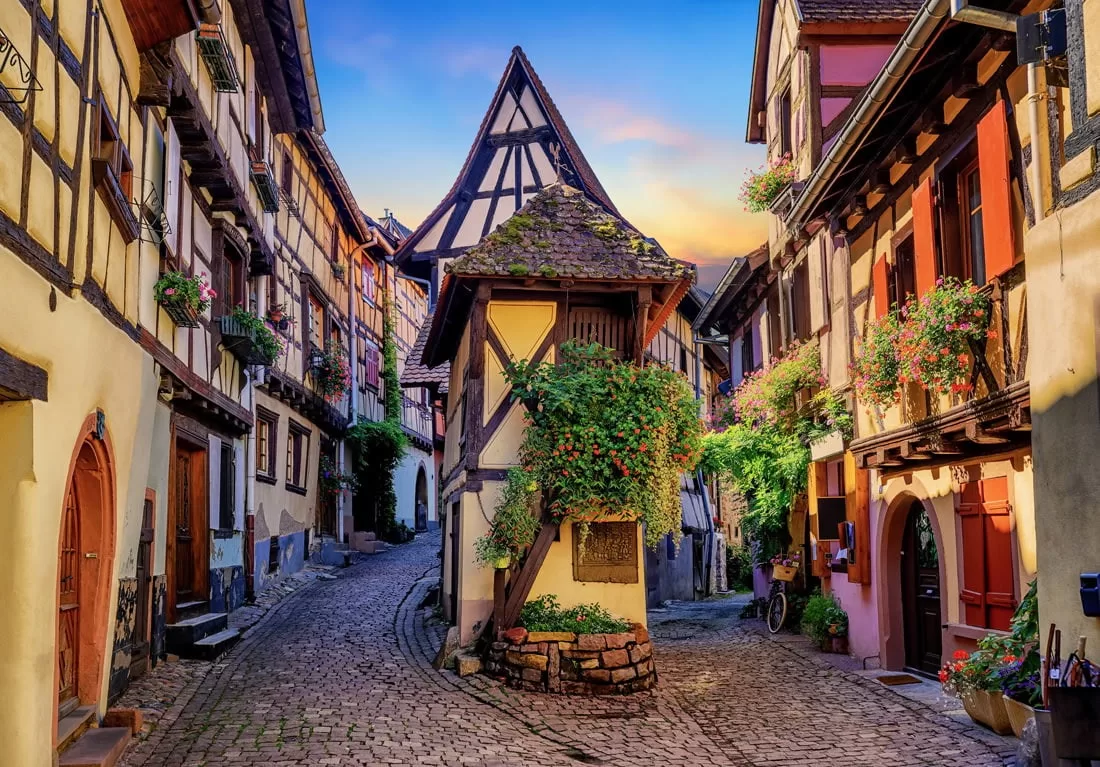These towns are a great alternative to the big cities.
France has a stunning variety of tranquil villages for escaping urban chaos and settling into a slower pace of local traditions, from Provence to Bretagne, the Basque Country to Alsace and Normandy to Auvergne. In these hilltop hamlets and picturesque ports, observing everyday life is the key to understanding the spirit of the place, whether you meander through ancient alleyways or watch fishermen unload lobster crates. Featuring red-clay roofs, pastel façades, centuries-old farmsteads, golden-hued castles, flower-dotted fields and vineyards, we’ve rounded up 12 beautiful French villages.
Moustiers Sainte-Marie, Alpes-De-Haute-Provence
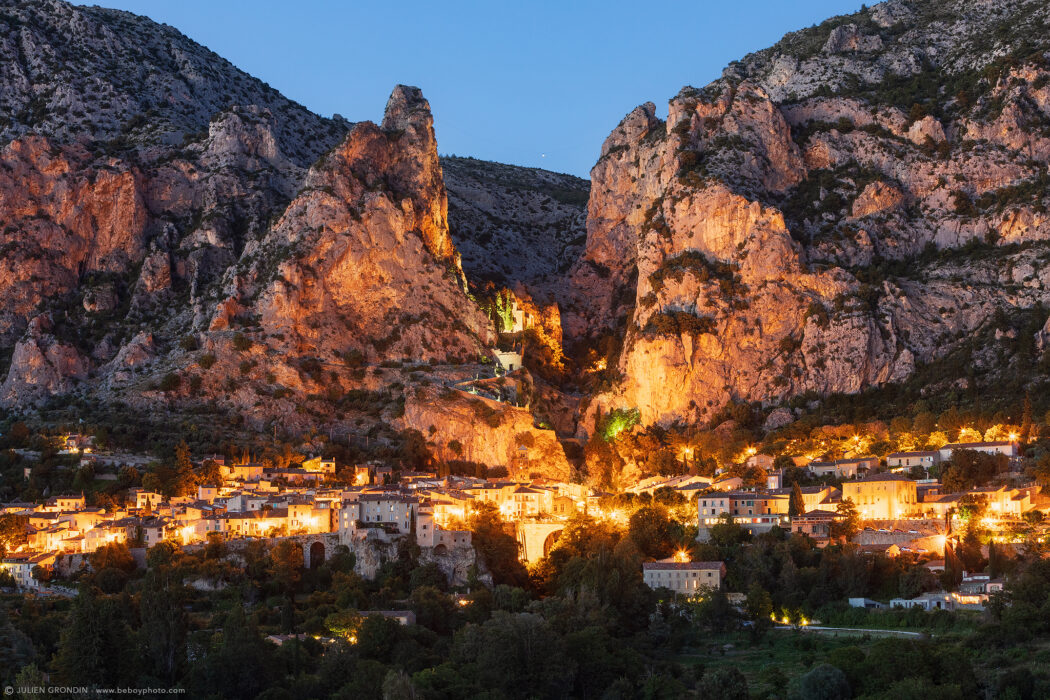
The faience ceramics adorned with delicate arabesques of birds and flowers are definitely the draw of this lively medieval potter’s village, perched atop the spectacular Gorges du Verdon canyon. But the attraction goes much deeper than that. In addition to a five-pointed gold star suspended between rocky ledges, the town is divided in half by the Adou river, with cobbled paths crisscrossing little stone bridges and pink limestone cliffs at sunset. At the bucolic, Ducasse-owned country inn La Bastide de Moustiers, you can enjoy a Haute Provençal lunch and a dip in the emerald-green Lac de Sainte-Croix.
Villefranche-Sur-Mer, Cote D’azur
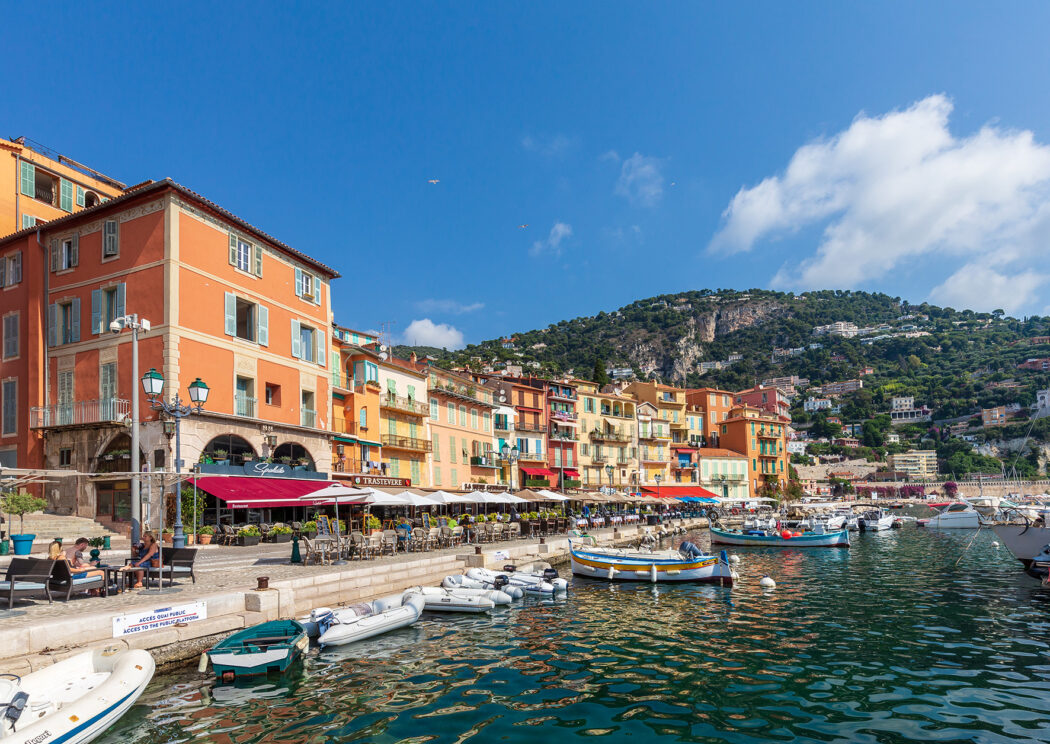
From a bend in the coastal road, this once-sleep fishing village is still deeply authentic without the trappings of other nearby tourist towns, with apricot- and lemon-coloured houses stacked against a painterly curve of shimmering blue sea, with bobbing wooden boats and a trapezoid-shaped stone citadel built in the 16th century. Through the backstreets, you’ll find the rue obscure, a mysterious medieval vaulted passageway, where Jean Cocteau once lived; across the quay is the pink 14th-century chapel that he redecorated with his mystical frescoes. A beautiful pebbly beach and a nautical hub, La Darse is a great place for water babies to dive, sail, row and restore boats.
Ploumanac’h, Brittany
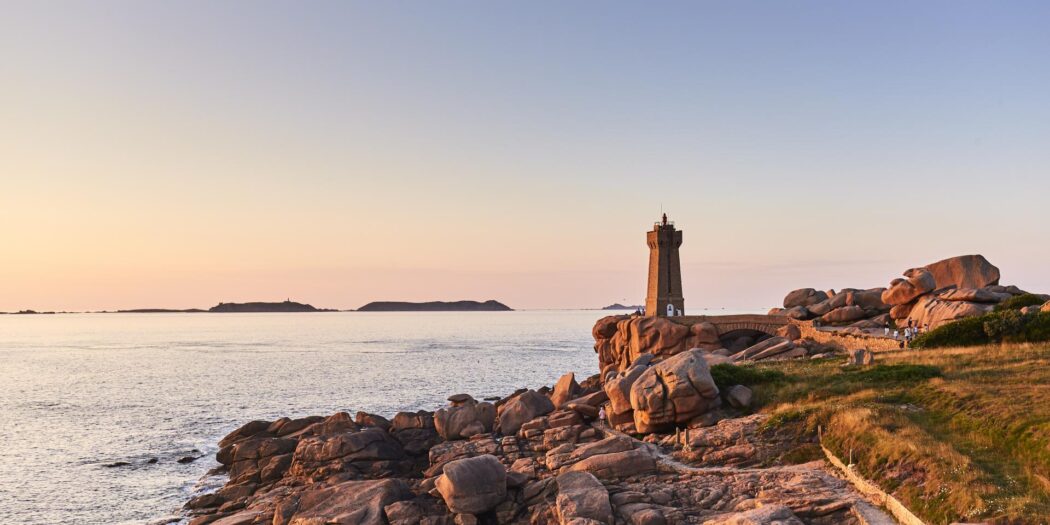
In Ploumanac’h, a miniature fishing port on Brittany’s Côtes d’Armor, pink granite boulders are piled helter-skelter along the shore, casting a glow on an untamed seascape. It’s time for a hike around the coast along the GR34 footpath, passing the dusty-rose Men Ruz lighthouse at the entrance to the Channel, as well as the dusty-rose Men Ruz lighthouse. Castel Beau Site, a waterside restaurant with a dreamy view of the neo-Gothic Costaérès castle on the tiny island opposite, is the place to fuel up on fresh caught lobster or grilled octopus in the neighboring village of Perros-Guirrec.
Saint-Saturnin Puy-Du-Dome, Auvergne
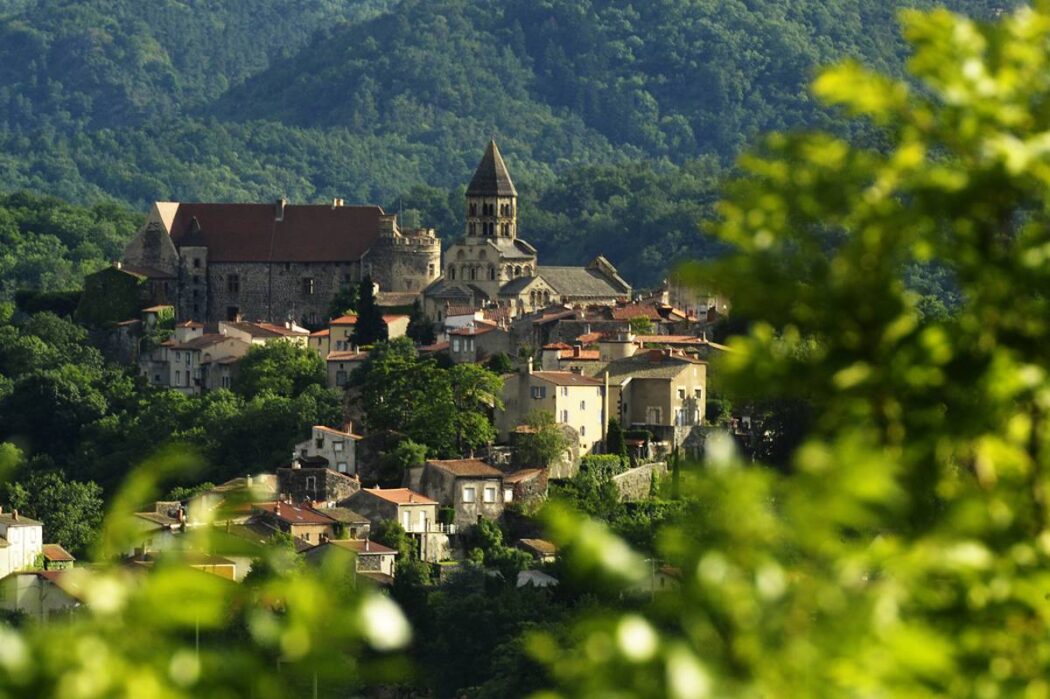
There are many royal stories woven into this verdant countryside, so history buffs should not pass up this flower-lined village with narrow cobblestoned streets, Renaissance fountains, a Romanesque church, and an impressive moated castle, the fief of the dynasty de La Tour d’Auvergne since 1281, boasting magnificent restoration. The castle is also a charming five-room guesthouse where Charles IX and his mother Catherine de’ Medici slept once. Visit the dungeon where Reine Margot was briefly imprisoned and spend the night at the castle, which is also a dungeon where Reine Margot was briefly imprisoned.
Barfleur, Normandy
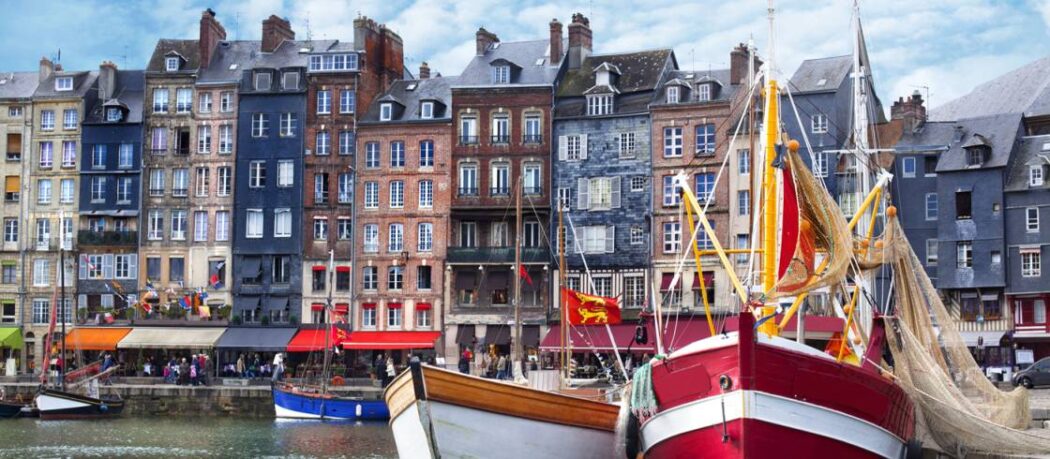
Visit this historic Norman fishing village on the north-eastern corner of the Cotentin Peninsula (the first port in the Anglo-Norman kingdom) for wild mussels straight from the sea. Barfleur blonde mussels are famous for their fleshy texture. With a plate of homemade frites and a pitcher of local cider, you can sample any of the little harborside restaurants. Stroll through the village after visiting the square-towered Saint Nicolas Church and look up at the fine granite- and schist-roofed houses with traditional red-clay glazed pottery.
Seillans, Var
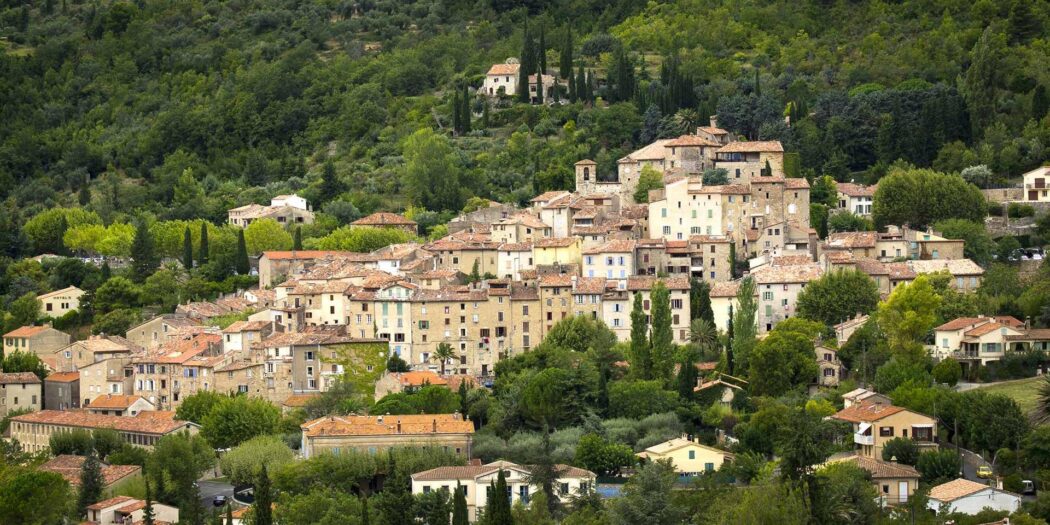
Seillans, a quaint village hidden in the backcountry near Grasse, sits atop a rocky bluff overlooking a valley once renowned for perfume-making flowers. It’s no wonder Robert Doisneau and Max Ernst, a surrealist artist who lived here for 12 years together with his wife Dorothea Tanning, liked this steep cobbled alleyway leading to a medieval castle and the 11th-century church of Saint Léger. Take in their art at the Maison Waldberg, then dine on rosemary-spiked duck and vanilla île flottante at the Hotel des Deux Rocs’ plane-tree-shaded square.
Sare, Pyrénées-Atlantiques
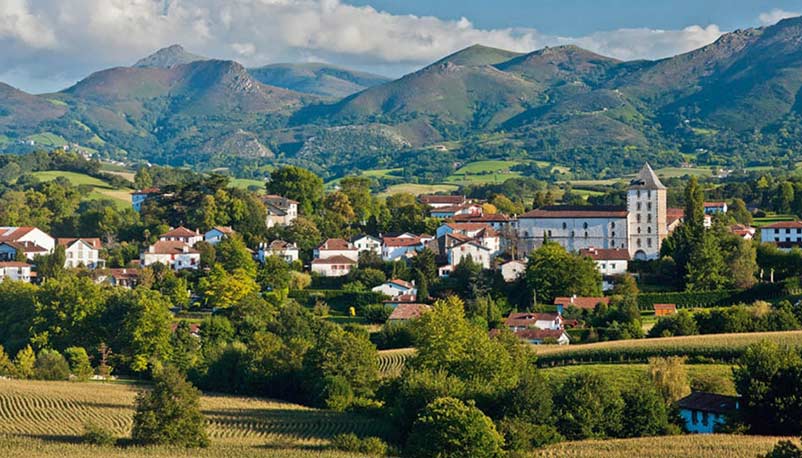
Located only nine miles from the Atlantic coast, this little Basque hamlet is at the foot of the Rhune and the Axuria mountains and will appeal to pelota fans. While eating a delicious black-cherry and custard-filled Gâteau Basque – there’s even a museum dedicated to the cake – you can watch locals bounce and smash the ball against the wall with several open-air courts (the largest is just opposite the town hall). The white farmhouses, trimmed with pretty red and green shutters, and the fortified church of Saint-Martin with its three rows of carved-oak balconies are must-sees, but you will also want to visit the prehistoric grottoes and fields of grazing pottoks (Basque ponies) in the surrounding countryside.
Domme, Dordogne
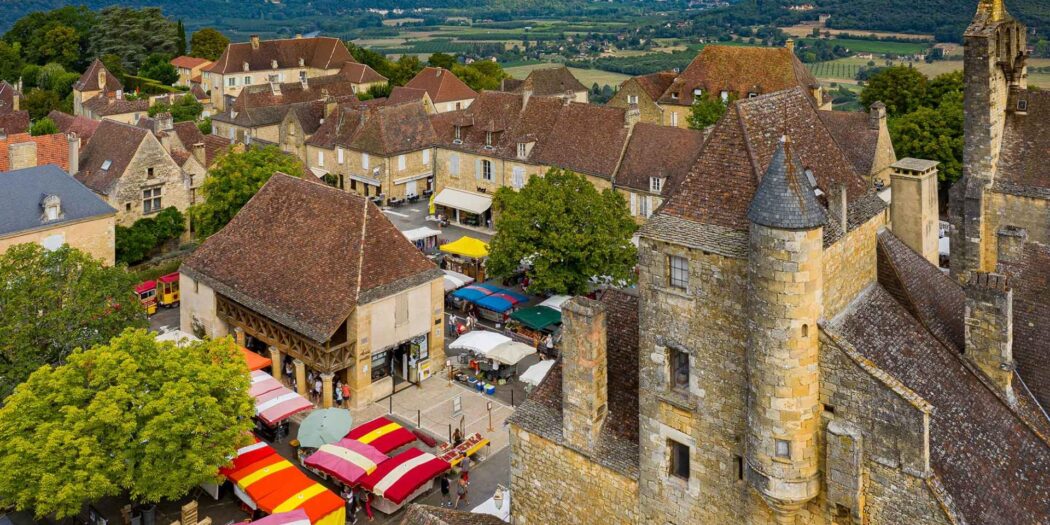
The fortified village is set high above the Dordogne valley and not only has spectacular views, but a rich history that dates back to the 14th century when the Templars were imprisoned (look out for prison graffiti still visible in the rampart walls) and the turbulent Hundred Years’ War. Afterwards, descend to the famous caves, a vast network of tunnels under the main square filled with drippy stalactites and stalagmites that line the streets. At Restaurant Cabanoix et Chataîgnes, you cannot leave without tasting the local pride and joy: homemade foie gras, semi-cooked, smoked or pan-fried, and spiced up with spices, apricots or figs.
Pigna, Corsica
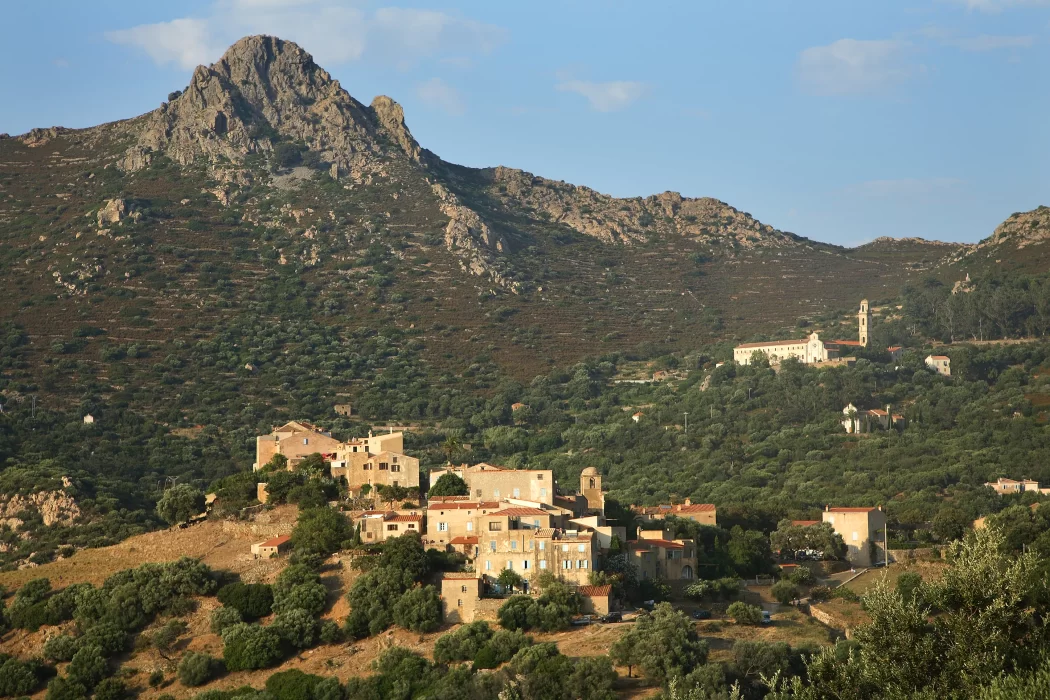
This tiny village is located thirty minutes inland of Calvi in the Nervia Valley, known for its traditional handmade crafts dating back to the Middle Ages and its rows of blue-shuttered stone houses that are honey-hued and blue-shuttered. Take the labyrinthine stairs to a shady café terrace to admire the stunning view over the surrounding olive groves and the shimmering Algajola Bay. Walk along narrow paths where cats snooze on windowsills, then take the labyrinthine staircase to reach it. A handmade shepherd’s flute and a wind-up toy that plays ancient Corsican melodies may be of interest to music lovers.
Menerbes, Provence
Once, this postcard-perfect village was flooded with Peter Mayle-crazed Provence tourists. In addition to Ménerbes’ rugged beauty and sweeping views of the Lubéron valley and the Alpilles foothills, there are also a prehistoric dolmen, a Gothic-Romanesque abbey, Sainte-Hilaire, as well as rows of carefully preserved aristocratic houses, including Dora Maar’s former house, now a residence and foundation for American artists. The museum has a quirky corkscrew museum as well.
Kaysersberg, Alsace

In the Alsace Wine Route, about 30 minutes away from Colmar, Kaysersberg is the town of storybook gingerbread houses (voted France’s favorite village in 2017) without the saccharine quaintness of tourist destinations. A row of half-timbered 16th-century buildings with carved window frames and flower-filled balconies and façades painted brick red, pear yellow, and lavender make up the long central street, with shops and cafés. Take a stroll to the ruins of the medieval castle for a bird’s eye view of the rooftops and neighboring vineyards, followed by some Grand Cru wine tasting.
Lautrec, Tarn
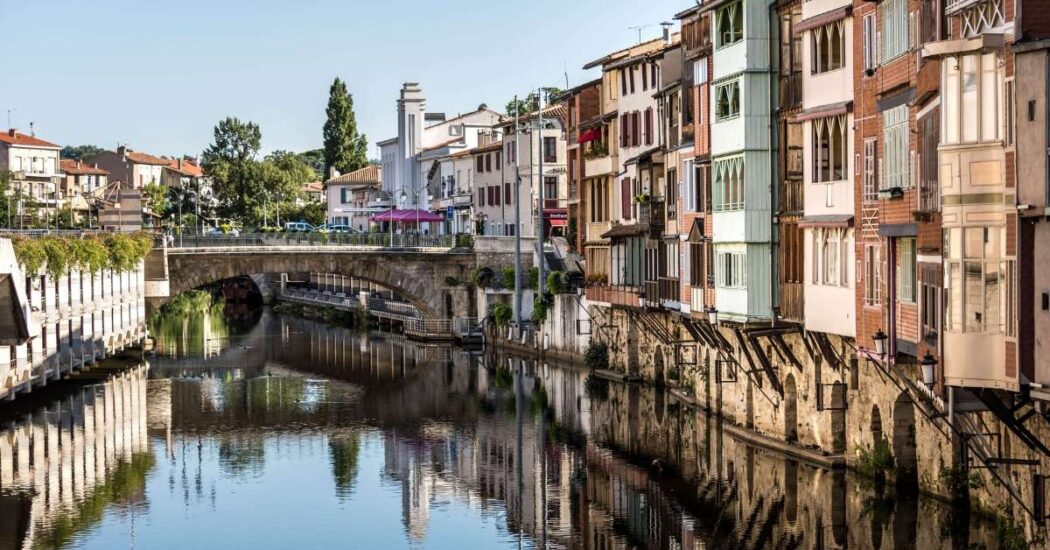
This quiet medieval country village in the Pays de Cocagne is steeped in the atmosphere of days gone by because it is the home of Henri de Toulouse-Lautrec’s family (he was born in Albi, the nearby episcopal city). Visitors can see how the flour was once made at a windmill built on a hill above town in the 17th century, as well as a wooden clog maker’s workshop built in the 15th century. During the August harvest, restaurants serve up pink-garlic soup and pink garlic is locally grown and celebrated with a festival.


